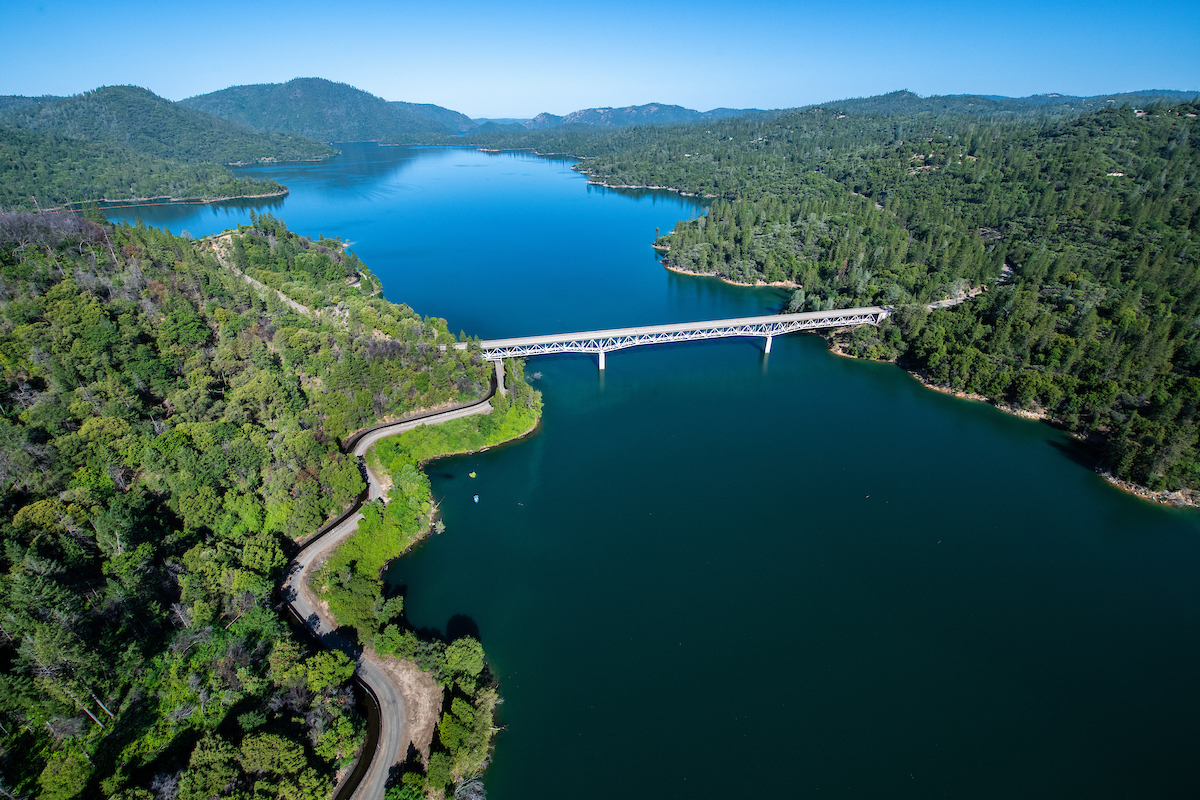An aerial view of Enterprise Bridge along Lumpkin Road.
SACRAMENTO, Calif. – The Department of Water Resources (DWR) has published a summary report on the Oroville Dam Safety Comprehensive Needs Assessment (CNA), initiated in January 2018 to identify dam safety and operational needs following reconstruction of the spillways damaged in February 2017.
A team of experts, including an Independent Review Board (IRB) of dam safety experts, determined that the Oroville Dam Complex is safe to operate and no urgent repairs are needed. Since conditions can change over time, DWR will conduct ongoing monitoring and assessment to maintain the safety and reliability of the complex.
“Public safety is at the core of DWR’s mission, and we are committed to continually evaluating the performance and safety of State Water Project facilities, including Oroville Dam,” said DWR Director Karla Nemeth. “The Comprehensive Needs Assessment report is an important step in our efforts to ensure the ongoing safety and reliability of facilities that provide water and flood control for millions of Californians.”
The CNA identified several risk-reduction projects that DWR already is moving to implement, including installation of new water pressure measurement devices to improve seepage monitoring and completion of a state-of-the-art seismic stability analysis. DWR also is planning to implement recommendations to raise Parish Camp Saddle Dam by three feet, line Palermo Canal to reduce leakage and improve rock slope stability, and install new remote starter and power connections to the spillway radial gates to improve reliability.
In addition, the CNA identified potential vulnerabilities that require further examination to better understand their actual risk.
The CNA report results are based on conditions known at this moment in time. Excellence in dam safety requires continual monitoring, investigation and assessment to understand risks as well as actions to reduce those risks, recognizing that no public infrastructure is ever free of risk. This continual monitoring, investigation and assessment of the Oroville facilities will occur through the State Water Project’s Dam Safety Program to ensure the ongoing safety and reliability of these facilities.
The CNA team included engineers, hydrologists and other experts knowledgeable about Oroville Dam, as well as experts in risk analysis. An Independent Review Board (IRB) of dam safety experts provided oversight, and a community-led group of elected officials and stakeholder organizations and private citizens (known as the Ad Hoc group) provided input.
The CNA was conducted in parallel to other Oroville Dam safety review efforts required by the Federal Energy Regulatory Commission (FERC), including a Level 2 Risk Analysis conducted by independent experts. The results of the FERC and the CNA assessments will be used by DWR management to make risk-informed investment decisions across State Water Project infrastructure.
The summary report is available online on the Oroville Dam Safety Comprehensive Needs Assessment website.
DWR will continue to work with the Oroville Citizens Advisory Commission to seek input and coordinate future Oroville Dam activities related to construction, operations, maintenance, flood management, and public safety. The report will be presented to the Commission on Friday, November 13, 2020. That meeting will be held virtually. More information is available at https://resources.ca.gov/Initiatives/Oroville-Dam-Citizens-Advisory-Commission.
